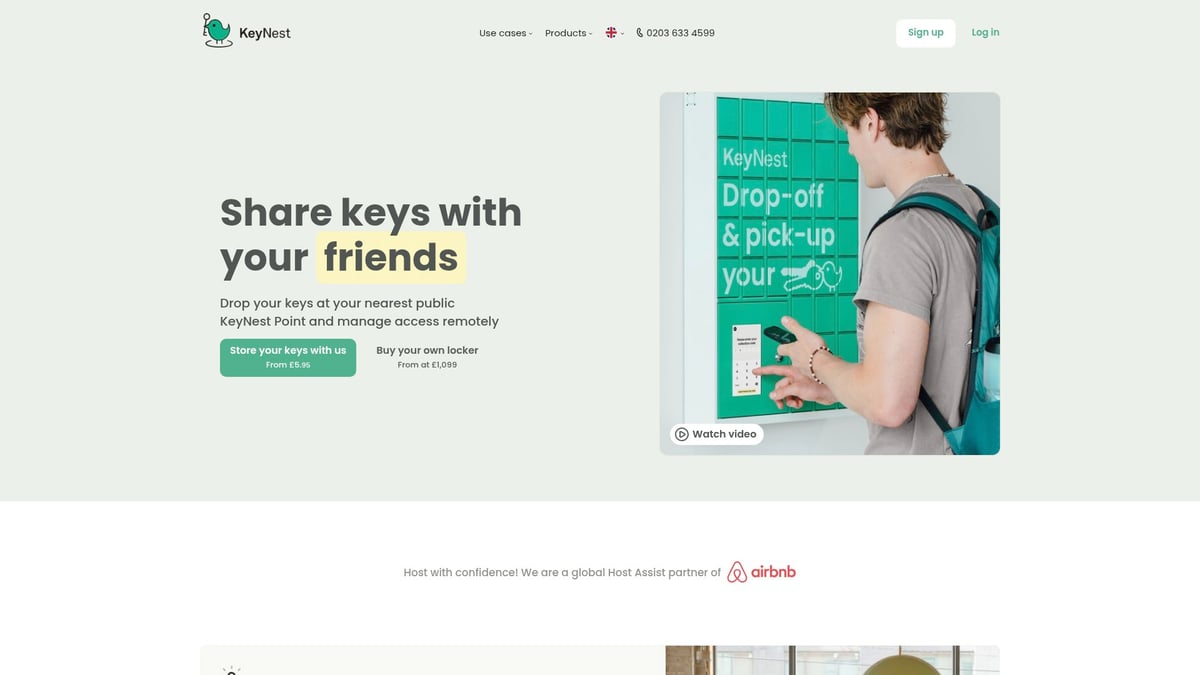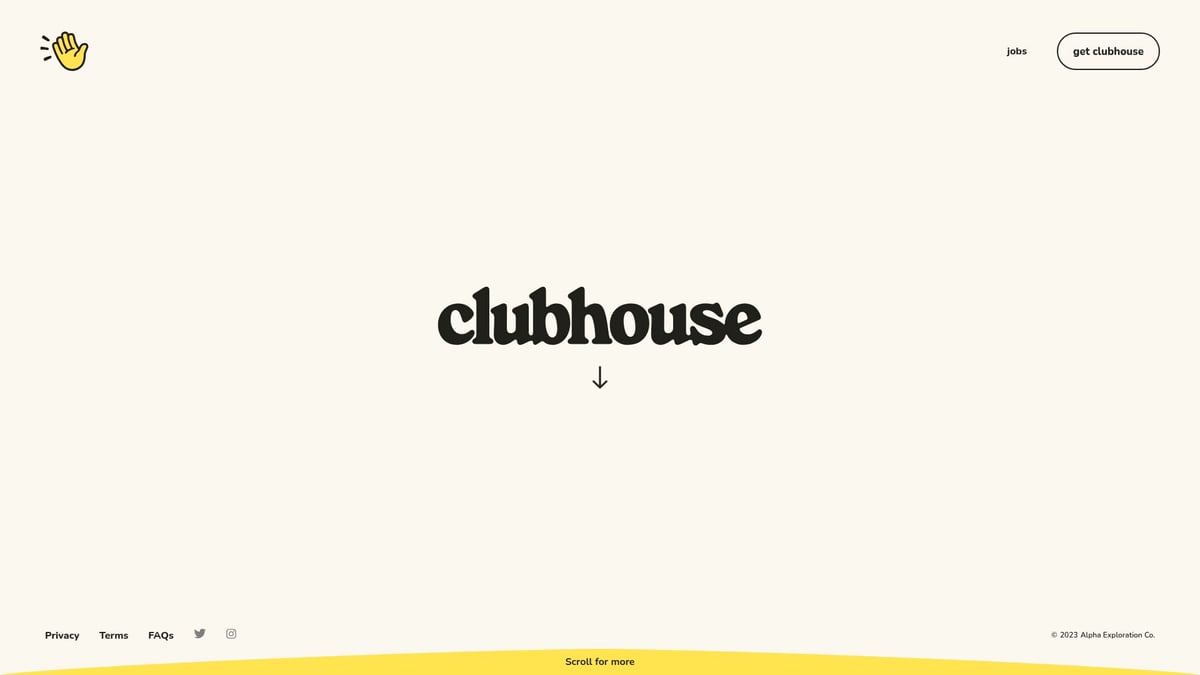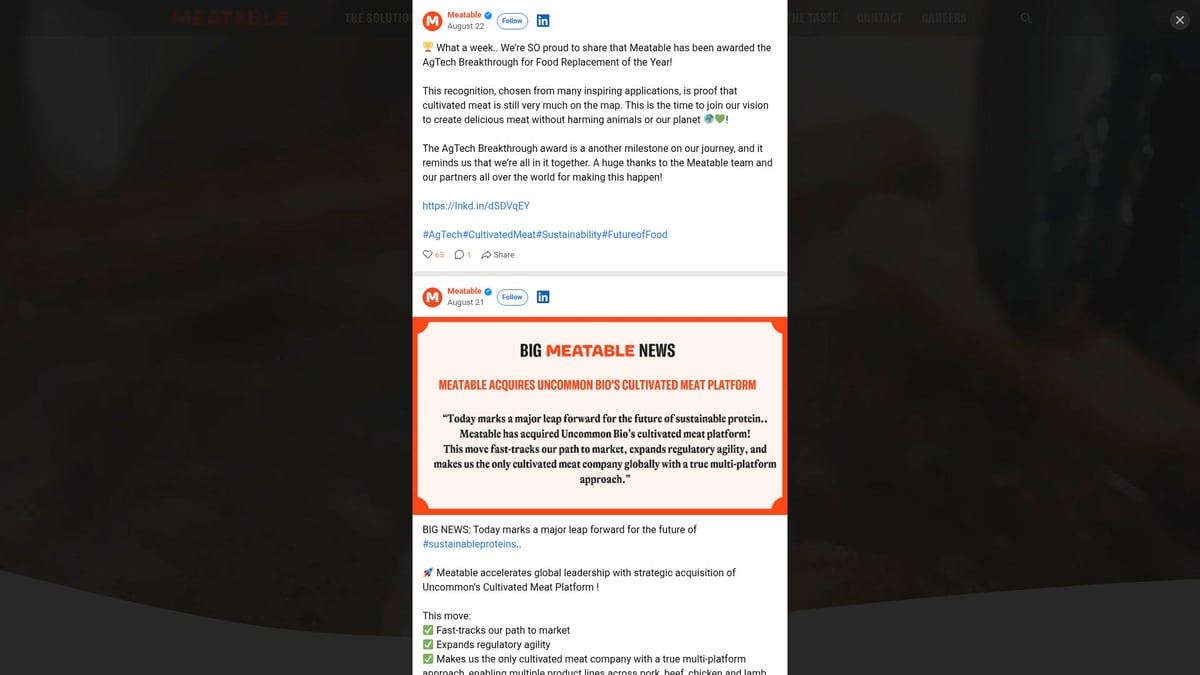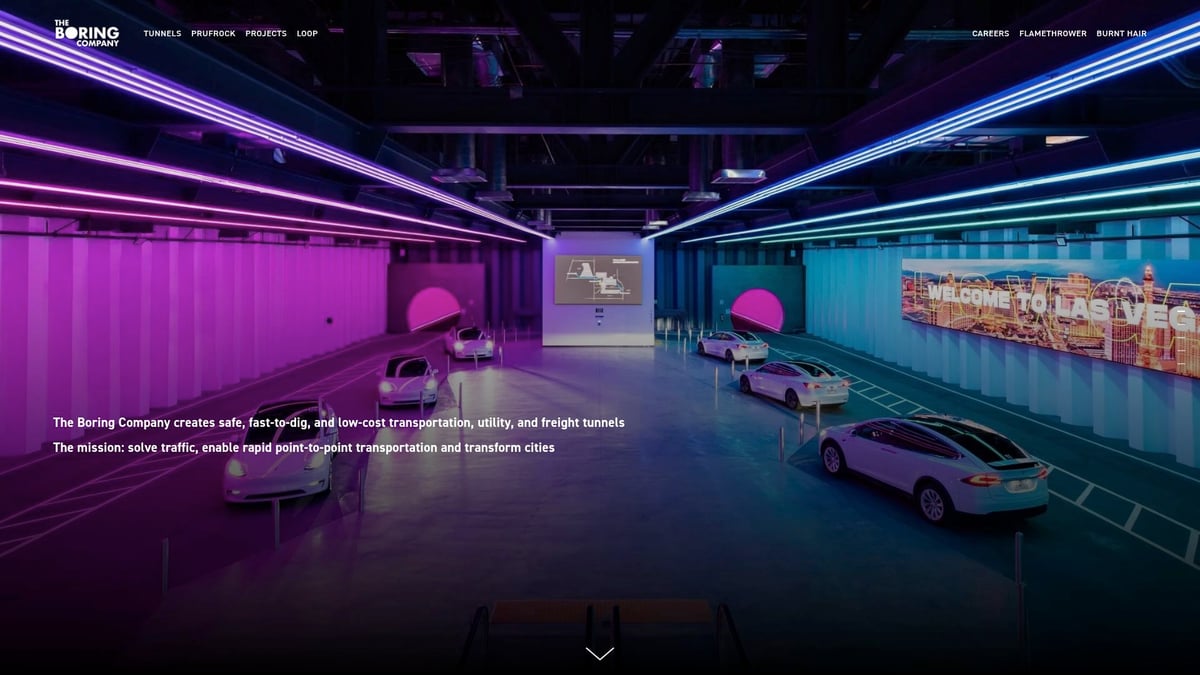8 Inspiring Startup Website Design Ideas for 2025 Success

As we approach 2025, the competition for startup website design excellence is fiercer than ever. First impressions online can make or break a new venture, with website design directly shaping conversion rates, user trust, and a startup’s ability to stand out.
In fact, the right startup website design is now a core driver of growth. Data shows that design-focused companies consistently outperform their peers. If you want to capture attention, inspire confidence, and fuel differentiation, your web presence must evolve.
This article reveals 8 inspiring startup website design ideas for 2025. Each one includes practical examples and tips you can act on right now. Ready to refresh your digital footprint? Let’s dive in.
The Evolving Role of Website Design in Startup Growth
Why Website Design Matters More Than Ever
First impressions happen online. For startups, your website is often the first handshake with a potential customer or investor. Data shows that 75% of users judge a company’s credibility based on its design. A polished startup website design instantly builds trust and signals professionalism.
Good design doesn’t just look nice—it drives real results. For example, a SaaS startup revamped its homepage and saw a significant spike in user signups. As the competition among startups intensifies, standing out visually becomes crucial. Mobile-first and accessible design are now essential, not optional. For a deeper dive into why design impacts growth, check out this Impact of Web Design on Startup Success.
Key 2025 Design Trends Shaping Startup Success
Staying ahead with startup website design means embracing the latest trends. In 2025, AI-powered personalization will tailor user experiences like never before. Micro-interactions and immersive storytelling are set to make websites more engaging.
Speed and minimalism remain top priorities. Competitors are already using animation and video backgrounds to create memorable moments. Interactive elements and dynamic content keep users exploring longer. The shift toward sustainability and ethical design will also influence how brands are perceived online.
The Connection Between Design, Conversion, and Product-Market Fit
A cohesive startup website design guides users from the landing page to product onboarding with clarity. Unified branding and intuitive UX reduce friction, making it easier for visitors to convert. In fact, startups that conduct design audits often see conversion rates double after a redesign.
Consistent design across all touchpoints boosts engagement and helps achieve product-market fit faster. When users encounter fewer obstacles and more delight, they stick around. A well-executed design isn’t just decoration—it’s a key growth strategy.
Challenges for Startups in Achieving Standout Website Design
Startups face hurdles like limited budgets and a lack of in-house design talent. Startup website design must balance eye-catching aesthetics with seamless functionality. Trends move quickly, so it’s easy to overcomplicate or miss the mark.
Common solutions include partnering with design studios or leveraging freelance experts. Many founders share that investing in external help led to breakthrough results. Remember, the right partner can help your startup keep pace with change and create a site that truly stands out.
8 Inspiring Startup Website Design Ideas for 2025 Success
Looking to elevate your startup website design in 2025? The right design ideas can transform your online presence, fuel conversions, and set your brand apart in a competitive landscape. Each of the following strategies is grounded in real-world examples and actionable tips, giving you a toolkit to craft a standout startup website design that speaks directly to your audience.
Explore these 8 inspiring ideas, each tailored for modern startups hungry for growth and differentiation.
1. Leverage Bold, Consistent Branding Across Every Touchpoint
Consistency is the backbone of effective startup website design. Take Feastables by Mr. Beast—vibrant colors, playful illustrations, and a unified logo make the brand instantly memorable. Everything from typography to imagery aligns for maximum impact.

Key features include a cohesive color palette, repeatable visual patterns, and a logo that remains identical across web, packaging, and social channels. This level of consistency fosters trust and brand recall, making your startup website design a powerful extension of your company’s identity.
- Benefits: Builds trust, encourages repeat visits, and supports omnichannel marketing.
- Target audience: Consumer brands, SaaS, D2C startups.
- Pros: Differentiates you from competitors, creates emotional connection.
- Cons: Requires upfront investment in brand strategy.
A unique insight: Consistency across every digital touchpoint drives user loyalty. For more on foundational strategies, check out this Web design for startups guide.
2. Integrate Subtle, Purposeful Animations for Engagement
Subtle animation can make your startup website design more interactive and user-friendly. KeyNest uses minimal yet effective animations—like animated headlines and hover effects—to draw attention to important actions and benefits.

Features such as step-by-step visuals and animated transitions help guide users through the site. These micro-animations clarify functionality, making the user journey smoother.
- Benefits: Guides attention, clarifies features, increases conversion.
- Target audience: SaaS, fintech, service-based startups.
- Pros: Enhances user experience without overwhelming visitors.
- Cons: Overuse can be distracting, so maintain balance.
Strategic animation elevates startup website design, increasing clarity and engagement while preserving professionalism.
3. Embrace Minimalist Design for Focus and Clarity
Minimalism is a hallmark of effective startup website design, especially for companies with a singular focus. Clubhouse’s homepage demonstrates this with ample whitespace, a single clear CTA, and minimal navigation.

Simple layouts, clear hierarchy, and focused messaging reduce cognitive load. This allows users to quickly grasp your value proposition.
- Benefits: Raises conversion rates, speeds up decision-making.
- Target audience: Apps, SaaS, startups with focused products.
- Pros: Highlights core value, streamlines user journey.
- Cons: Risk of feeling too sparse if brand personality isn’t balanced.
Data from Crazy Egg shows minimalist sites can see up to 34% higher conversion—proof that less can truly be more in startup website design.
4. Tell a Compelling Visual Story With Video and Imagery
Visual storytelling is a game changer for startup website design. Meatable uses background video and infographics to convey its mission and impact, transforming technical concepts into emotional narratives.

Hero videos, story-driven sections, and a blend of photos and graphics all work together to build resonance. This approach captures attention and makes complex ideas easy to understand.
- Benefits: Emotional resonance, higher engagement, quick communication of ideas.
- Target audience: Mission-driven, biotech, sustainability startups.
- Pros: Boosts shareability and memorability.
- Cons: High-quality media assets and optimization for speed are essential.
A compelling story told visually increases time-on-page and brand recall, making your startup website design truly unforgettable.
5. Showcase Products From Multiple Angles and Contexts
Transparency and detail are key to trust in startup website design. Cinera sets a strong example by displaying its headsets from various perspectives, including lifestyle usage and 360-degree product views.

Contextual images and product videos allow users to visualize ownership. This reduces uncertainty and helps buyers make confident decisions.
- Benefits: Builds trust, aids purchase decisions, reduces returns.
- Target audience: Hardware, consumer electronics, e-commerce startups.
- Pros: Increases perceived value, showcases product quality.
- Cons: Requires investment in photography and video production.
Diverse visuals help users see themselves using your product, strengthening the effectiveness of your startup website design.
6. Use Color Strategically to Enhance Brand Personality
Color is one of the most influential elements in startup website design. Minna’s vibrant palette perfectly reflects its playful sparkling tea brand, using dynamic backgrounds and product-centric color blocks.
Strategic use of color evokes emotion and strengthens brand identity. Every shade is purposeful, supporting the overall messaging.
- Benefits: Makes your site memorable, visually pleasing, and emotionally engaging.
- Target audience: CPG, lifestyle, wellness startups.
- Pros: Sets you apart, encourages brand recognition.
- Cons: Poor color choices can harm accessibility.
According to Crazy Egg, 85% of shoppers cite color as a primary reason for buying—a testament to the power of color in startup website design.
7. Prioritize Visual Hierarchy and Navigation Simplicity
A strong visual hierarchy is essential for effective startup website design. The Boring Company demonstrates this with clear navigation, bold hero sections, and full-screen visuals that guide the eye.

Intuitive menus and prominent CTAs make it easy for users to find information. Scannable layouts ensure that key messages are never missed.
- Benefits: Reduces bounce rate, improves user flow.
- Target audience: Tech, infrastructure, B2B startups.
- Pros: Seamlessly guides users to important content.
- Cons: Overly simple navigation may limit exploration for power users.
A robust hierarchy and simple navigation work together to create a frictionless journey within your startup website design.
8. Create Immersive, Interactive Experiences With Micro-Interactions
Micro-interactions are the “secret sauce” for memorable startup website design. KeyNest leverages hover states and interactive elements to demonstrate product steps and provide instant feedback.

Dynamic content and responsive micro-interactions delight users, increasing engagement and encouraging repeat visits. These details clarify actions and make the user journey enjoyable.
- Benefits: Boosts engagement, clarifies next steps, encourages exploration.
- Target audience: SaaS, fintech, marketplaces.
- Pros: Increases session duration, promotes brand stickiness.
- Cons: Can impact site speed if not optimized.
Thoughtful micro-interactions elevate startup website design, ensuring users remember your brand long after their visit.
How to Implement These Design Ideas in Your Startup
Bringing fresh startup website design ideas to life requires a clear, actionable process. Whether you are launching your first site or revamping an existing one, a step-by-step approach can help you maximize impact, minimize friction, and set your startup apart in a crowded market.
Conducting a Design Audit and Setting Clear Goals
Begin by evaluating your current startup website design. Use analytics tools like heatmaps and session recordings to identify where users drop off or hesitate. This data-driven audit helps uncover both strengths and areas for improvement.
Set measurable objectives for your redesign, such as increasing conversion rates, boosting engagement, or lowering bounce rates. Startups that regularly audit their user journeys see faster progress and fewer wasted resources. For a detailed process, check out this UX audit guide step-by-step process for 2025. Prioritize changes that align with your business goals and will have the biggest impact on your startup website design.
Choosing the Right Design Resources and Partners
Selecting the right people for your startup website design project is critical. Consider your options: in-house designers, freelancers, agencies, or specialized studios. Review portfolios, seek partners with relevant industry experience, and ask about their process for transparency.
Ongoing collaboration ensures your website evolves with your startup’s needs. Many startups find that partnering with design studios accelerates product-market fit and brings fresh ideas to the table. Balance your decision by considering budget, timeline, and the scale required for your startup website design.
Balancing Aesthetics, Functionality, and Speed
A successful startup website design needs to look great, work smoothly, and load quickly. Focus on fast load times and mobile responsiveness as key priorities. Make creative visuals work alongside usability and accessibility standards.
Test your website with real users to catch usability issues early. Sites that balance speed and functionality keep visitors engaged longer and encourage return visits. Use optimization tools and gather feedback to continuously improve your startup website design.
Measuring Impact and Iterating for Continuous Improvement
After launch, set up clear KPIs and tracking tools to measure your startup website design’s performance. Implement A/B testing on new elements and collect feedback from real users, both qualitative and quantitative.
Iterate based on what the data tells you. Consistent, small improvements can drive sustained growth and help your startup adapt to changing trends. Treat your startup website design as a living asset, always evolving with your business goals and user needs.
Case Studies: Startup Website Redesigns That Drove Real Results
Real-world examples speak volumes about the impact of great startup website design. The following case studies reveal how strategic redesigns can directly drive conversions, engagement, and business growth for startups.
Before and After: SaaS Startup Homepage Transformation
One SaaS startup recognized its homepage was cluttered and confusing, resulting in missed opportunities. After a comprehensive redesign, the team introduced a single, clear call to action, streamlined navigation, and reinforced their branding with consistent visuals.
With these changes, the startup website design played a pivotal role in boosting the conversion rate from 2.5 percent to 5.1 percent. User testing revealed that visitors now found it easier to understand the product’s value and take action. This case underlines how refining homepage structure can rapidly accelerate growth. For actionable tips on optimizing your own homepage, see this guide on how to structure a landing page for startups.
Mission-Driven Startup: Storytelling That Resonates
A sustainability-focused startup leveraged video and infographics to amplify its story and mission. The new startup website design included a hero video and visual data, making the brand’s impact instantly clear to visitors.
The redesign led to a 40 percent increase in average session duration and sparked greater interest from both investors and eco-conscious customers. By balancing information with inspiration, the startup transformed its web presence into a powerful storytelling platform. This approach shows how compelling narratives, supported by strong visuals, can make a lasting impression.
Product Startup: Visual Hierarchy and Product Showcases
For a hardware startup, showcasing products effectively was the turning point. The team invested in 360-degree product views and contextual imagery, allowing users to see the product in real-life settings. This startup website design upgrade resulted in a 27 percent drop in bounce rate and positive user feedback about increased trust and confidence in purchasing.
Professional photography and video assets made the difference by highlighting product details and benefits. The case demonstrates that immersive visuals are key to standing out, especially for physical product startups.
Lessons for Founders: What Sets Successful Startup Sites Apart
What do all these success stories have in common? Each startup website design prioritized clarity, consistency, and user-centric experiences. Founders saw the value of aligning web design with broader business goals and embraced data-driven iteration.
Here is a summary of what sets top-performing startup sites apart:
| Key Factor | Impact |
|---|---|
| Clear messaging | Increases conversions |
| Consistent branding | Builds long-term trust |
| User-centered design | Boosts engagement |
| Emotional storytelling | Drives loyalty and recall |
To stay ahead, founders should track emerging trends, such as those outlined in 2025 web design trends for startups, and treat startup website design as an ongoing investment.
Resources and Tools for Startup Website Design in 2025
Staying ahead in startup website design means arming your team with the best tools, inspiration, and strategies. The right resources can streamline your workflow, foster creativity, and help you build a site that stands out in 2025.
Must-Have Design Tools and Platforms
Choosing the right stack is crucial for startup website design success. Leading platforms like Figma, Webflow, Adobe XD, and Canva offer robust features for prototyping, collaboration, and no-code development.
| Tool | Best For | Key Feature |
|---|---|---|
| Figma | UI/UX design | Real-time collaboration |
| Webflow | No-code development | Fast site deployment |
| Adobe XD | Prototyping | Design system support |
| Canva | Quick visuals | Easy templates |
Startups using Webflow often launch websites 30% faster, giving them a competitive edge. Templates and design systems further speed up the process, making startup website design more efficient for growing teams.
Inspiration Sources: Where to Find the Latest Startup Design Trends
Keeping up with trends is vital for startup website design. Curated galleries like Dribbble, Behance, and Awwwards spotlight standout projects and fresh ideas. For a deeper dive into upcoming trends, check out resources like Top UX/UI design trends 2024.
Following design leaders and agencies on social media can spark new concepts. Explore Dribbble’s “Startup Website” category for real-world inspiration, and adapt what you find to your own brand identity. Let these sources shape your next bold move.
Building a Design-First Culture in Your Startup
A thriving startup website design process starts with a design-first mindset. Encourage collaboration between design, product, and marketing teams to foster innovation and rapid iteration.
Set up regular feedback loops and design reviews, involving non-designers to build appreciation for design’s impact. Startups with design-led cultures often innovate faster and align their websites with business goals. Founders can champion this shift by providing resources and training, making startup website design a shared priority across the company.
Accessibility, Performance, and Future-Proofing Your Website
Modern startup website design must be accessible, fast, and ready for the future. Ensure WCAG compliance for inclusivity, and optimize for speed, SEO, and mobile devices. Sustainable practices are also rising in importance—learn more about Sustainable Web Design Practices to boost user experience while reducing your digital footprint.
Prepare for AI, voice, and AR integrations to keep your site ahead of the curve. Use a checklist to maintain scalable, accessible, and high-performing startup website design as your business grows.
After seeing how strategic design choices can completely transform a startup’s website and accelerate growth, you might be wondering where your own site stands. If you’re aiming for higher conversions and a smoother user journey in 2025, let’s take the guesswork out of it together. We’ll give you practical, personalized feedback—so you’ll know exactly what’s working and what could be even better. Ready to discover hidden opportunities and get inspired for your next big move?
Book a free Product Website Audit
